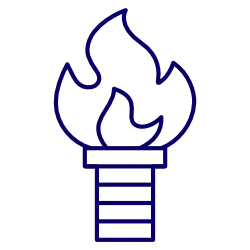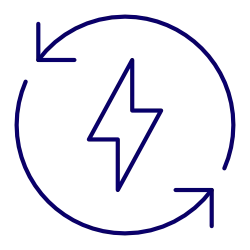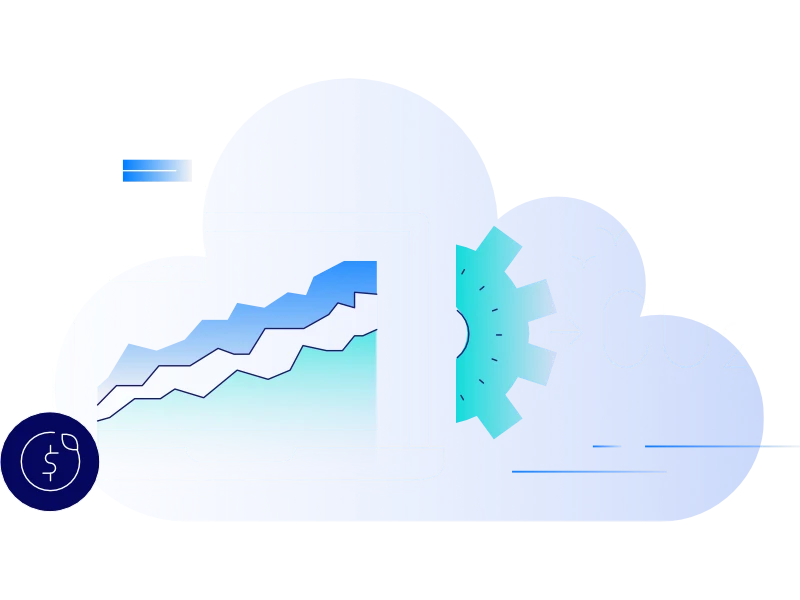Peripheral Equipment
Whole Plant Solutions
At Onnu, we can design, project manage and install everything that is needed for a successful pyrolysis plant.
%20(1).webp)
Key Areas
A high performing pyrolysis site requires a range of functions around the core pyrolysis unit. While you can purchase our equipment and manage the build of the plants yourself, many customers prefer for us to fill the role of designing, sourcing, installing and commissioning the plant in its entirety.

Infeed & Discharge
Feedstock needs to be stored, prepared, dried and fed consistently, and biochar can be bagged.

Energy Capture
Depending on the plant, energy may be used onsite for drying, other heat uses or to generate electricity

Emission Control
Depending on your feedstock and permits, a range of abatement technologies may be required
Your pyrolysis one-stop shop
Buying a pyrolysis unit is only part of what is required to launch a successful operation. Drawing on our experience as a project developer, we have the knowledge to design and install an efficient plant optimized to your goals.
We can offer early validation of a project, equipment design and CAD layouts, and manage the delivery, installation of all components ensuring a joined up approach you can rely on.
With CarboFlow at the core, we can deliver the right peripheral equipment to ensure optimal performance within your budget.

Feedstock Preparation & Drying
Preparing biomass to the right size, moisture level and flowability is essential for stable pyrolysis. The right handling and drying systems ensure consistent feed, prevent blockages and improve overall reactor efficiency — and we help you source solutions matched to your material type, capacity and operational setup.

Screw Conveyors
A screw (auger) conveyor is a rotating helical blade inside a trough or tube that moves the biomass feedstock steadily from one point to another.
It is typically used for conveying dried feedstock to the pyrolysis reactor in horizontal or vertical directions. The exact specifications depend on the site layout and feedstock properties. However, they typically have a limitation on the length and are preferred for short distance transport of feedstock.

Belt Conveyors
A belt conveyor is a continuous moving belt supported by rollers that carries loose biomass feedstock over longer distances.
It is typically used for conveying wet feedstock to the dryers. The belt conveying allows for transportation over longer distances. The exact specifications depend on the site layout and feedstock properties.

Chain Drag Conveyors
A chain-drag conveyor uses heavy-duty chains with attached flights to drag biomass through an enclosed trough.
It is typically used to move dried feedstock to the pyrolysis reactor or quenched biochar out of the reactor. It’s great for moving coarse, hot, or abrasive material over medium distances while keeping dust contained. The exact specifications depend on the conveyed material's properties and throughput (kg/hr).

Walking Floor Systems
Walking Floor systems are a type of feeding mechanism where biomass is fed via a hydraulic slatted system that "moves" the floor to deliver biomass uniformly. It can come in a 20 ft or 40 ft container system or as custom moving floor system in bunkers.
The wet feedstock is hauled into the containers or bunkers and the moving floors deliver the feedstock to the dryers via discharge chute conveyors in a controlled manner. The exact specifications depend on the required throughput (kg/hr or t/hr) and the feedstock properties.

Rotary Feeders
A rotary feeder is a type of feeding mechanism that consists of a rotating arm in a bunker. It rotates uniformly to deliver biomass through a discharge chute.
It is typically used to feed dried feedstock to the pyrolysis reactor via screw conveyors fitted in the discharge chutes. While they're good for high density feedstocks like woodchip, they may not be suitable for low density feedstocks like AD digestate. The exact specifications depend on the required throughput (kg/hr or t/hr) and the feedstock properties.

Bunker Feeder
A bunker feeder is a type of feeding mechanism which consists of a moving overhead system with a scraper blade that sweeps biomass across a bunker floor and pushes it toward a discharge point.
The wet feedstock is hauled into the containers or bunkers and the overhead moving arms deliver the feedstock to the dryers via discharge chute conveyors in a controlled manner. The exact specifications depend on the required throughput (kg/hr or t/hr) and the feedstock properties.

Dryers (Drum)
A drum (rotary) dryer is a large rotating cylinder with internal flights that lift and shower material through a heated gas stream to evaporate moisture.
It is typically used to dry biomass feedstock to the required moisture content levels.

Dryers (Belt)
A drum (rotary) dryer is a large rotating cylinder with internal flights that lift and shower material through a heated gas stream to evaporate moisture.
It is typically used to dry biomass feedstock to the required moisture content levels.
Control & Automation
Waste heat from pyrolysis can be recovered and turned into usable heat or electricity, increasing plant efficiency and reducing energy costs. We help identify the most suitable heat recovery and power systems based on available heat sources, output needs and integration requirements.

PLC Cabinets
Programmable Logic Controller (PLC) cabinets house power supplies, I/O modules, motor starters, wirings, etc that run the machines. They protect and organise control hardware for reliable and safe operation.
It acts as the brain of the pyrolysis machine and the entire plant, allowing us to not only control every individual component but also decide how they will interact with each other to optimise throughput. The specifications of the cabinet is usually decided by enclosure rating, I/O count, power/UPS capacity, cooling needs, physical size and required certifications.

HMI Screens
Human Machine Interaction (HMI) screens are the operator touchscreens or panel displays used to monitor and control the process, set recipes, view alarms and run manual overrides. Often HMI screens come integrated with the PLC module. Their specifications are typically decided based on required screen size & resolution, touch type, ingress rating (IP), connectivity (Ethernet/Modbus/OPC), panel/flush mount options and compatibility with the PLC stack.
Energy Capture
Waste heat from pyrolysis can be recovered and turned into usable heat or electricity, increasing plant efficiency and reducing energy costs. We help identify the most suitable heat recovery and power systems based on available heat sources, output needs and integration requirements.

Heat Exchangers
A heat exchanger is used to transfer heat between process streams (hot flue gas, hot oil, vapour or cooling water) to recover energy.
The combusted hot flue gases carry significant amount of heat energy that is difficult to tap as is. Heat exchangers capture this energy and transfer it to water. It can then be utilised as per the site's requirements. The exact specifications of the heat exchanger depend on the amount of energy coming out from the flue gases and the desired efficiency and budgetary constraints.

ORC machines
An Organic Rankine Cycle (ORC) unit converts heat into electricity using an organic working fluid and a turbo-expander.
The energy captured from the flue gases, after being captured by the heat exchanger can be further converted into electricity using an ORC unit. The exact specifications of the ORC unit depend on the amount of energy captured by the heat exchanger and the desired efficiency and budgetary constraints.
Emission Control
Clean gas handling is critical for compliance and equipment protection. Effective gas scrubbing systems ensure emissions meet standards and downstream processes stay clean — selected based on your gas volume, contaminants and regulatory needs.

Wet Scrubbers
A wet scrubber uses a liquid (usually water) spray or packed-bed contact to capture soluble gases, acid vapours and fine particulates from pyrolysis flue gas. It’s used where efficient gas cooling and high removal of condensibles or soluble pollutants is needed before emission or further treatment.
The flue gases need to cleaned before being released into the atmosphere. Wet scrubbers capture WHAT GASES and are essential for adhering to the emission limits set by authorities. The exact specifications of the wet scrubber depend on the flow rate of the flue gas, its composition and properties and the method of scrubbing.

Cyclone Separators
A cyclone separator uses centrifugal force to remove coarse particles and char from hot gases before they reach filters or heat recovery. It’s rugged, low-maintenance, and ideal as a first-stage solids interceptor in a pyrolysis line.
The flue gases need to cleaned before being released into the atmosphere. Wet scrubbers capture WHAT GASES and are essential for adhering to the emission limits set by authorities. The exact specifications of the wet scrubber depend on the flow rate of the flue gas, its composition and properties and the method of scrubbing.

Flue Stacks & Ducting
Flue stacks and ductings are steel bodies that safely convey exhaust gases from the reactor through cleaning equipment and out to the atmosphere.
The exact specifications of the ductings and flue stacks depend on the exhaust gas flow and temperature, required stack height (dispersion/regulatory), duct diameter & layout, material (corrosion/temperature resistant), etc
Discharge & Collection
Efficient discharge, transport and packaging of biochar or by-products keeps operations smooth and dust-free. Systems are chosen to match your throughput, storage method and automation level while ensuring safe, clean and accurate collection.

Chain Drag Conveyors
A chain-drag conveyor uses heavy-duty chains with attached flights to drag biomass through an enclosed trough.
It is typically used to move dried feedstock to the pyrolysis reactor or quenched biochar out of the reactor. It’s great for moving coarse, hot, or abrasive material over medium distances while keeping dust contained. The exact specifications depend on the conveyed material's properties and throughput (kg/hr)

Bagging System
A bagging system is used to fill, seal and label finished products into bags of different size options. The quenched biochar can be directly bagged in required size and format (50L, small consumer bags, or bulk sacks) for retail or bulk dispatch. It’s used to automate packing, control weights, and speed up dispatch.
The exact specifications of the bagging system will depend on the discharge rate, sizing and labelling requirements.
Concept to operation expertise
Our team can take over all the aspects needed to deliver a fully operational plant so all you have to worry about is providing the buildings and services.
- Complete plant design - detailed layouts completed using CAD, providing all the requirements for your site and buildings
- 3rd party equipment sourcing - manage all sourcing and integration of required equipment
- Complete project management - all plans and scheduling shared with you throughout the process
- Installation, commissioning and training - plant delivered fully operational
Concept to operation expertise
Our team can take over all the aspects needed to deliver a fully operational plant so all you have to worry about is providing the buildings and services.
- Complete plant design - detailed layouts completed using CAD, providing all the requirements for your site and buildings
- 3rd party equipment sourcing - manage all sourcing and integration of required equipment
- Complete project management - all plans and scheduling shared with you throughout the process
- Installation, commissioning and training - plant delivered fully operational
%20(1).webp)
Check out CarboFlow's other features
Want to know more about our technology?
Our experts can discuss how it works and how it may match your needs.



